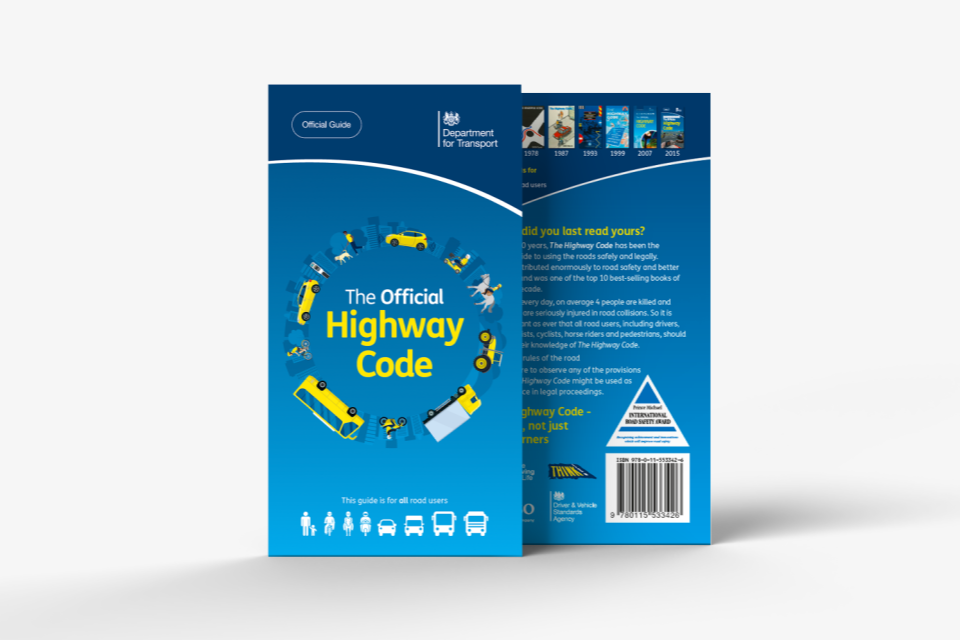
© DVSA Crown copyright
Following a week of debate and scrutiny from the public, media outlets and stakeholders alike, the new changes to The Highway Code came into effect on Saturday (29 Jan).
At their core, the changes are designed to improve safety for the most vulnerable road users.
They centre around a new hierarchy of road-users, meaning quicker or heavier modes of travel have the greatest responsibility to reduce the danger or threat they may pose to others on the road.
In total, ten sections of The Highway Code have been changed, with 50 rules being added or updated.
These cover issues such as people crossing the road at junctions, walking, cycling or riding in shared spaces and overtaking when driving or cycling.
The changes have been welcomed by Road Safety GB.
Bill Smith, Road Safety GB’s director of communications, said: “The use of our roads is a shared responsibility and by putting into practice these changes will endeavour to create a safer road environment for all groups of road users.
“We look forward to supporting the DfT and engaging with other interested parties and the public in general in promoting this crucial safety information.”
Naturally, the changes have also been welcomed by charities and organisations who represent the interests of pedestrians, cyclists and horse riders.
That includes Living Streets, whose interim CEO Stephen Edwards says the revisions “will benefit us all”.
Speaking prior to the changes coming into effect, he said: “The Highway Code currently treats children walking to school and lorry drivers as if they are equally responsible for their own or other people’s safety. These changes will redress that balance.
“People walking cause the least road danger but are often left paying the price, with pedestrians accounting for over a quarter of road deaths.
“Road users who have potential to cause the greatest harm should take the greatest share of responsibility to reduce the danger they pose.”
Likewise, the British Horse Society (BHS) has described the changes as “a significant step forward for equestrian road safety”.
Cycling UK meanwhile hopes the new updates will create a “mindset shift”.
Duncan Dollimore, Cycling UK’s head of campaigns, said: “The latest changes to the Highway Code are a hugely important start towards a mindset shift that will make the roads safer for everyone – not just for people who choose to cycle or walk.”
Concerns about lack of communication continue to exist
However, the cycling charity adds that the Government must commit to a long-term awareness campaign, in order for the changes to be effective.
Mr Dollimore added: “The changes in our driving behaviour however will only happen if Government commits to communicating them with simple, accurate and memorable messaging in the long term.”
The issue of communication has arisen many times in the lead up to the changes coming into effect – and is something other stakeholders have raised concern about, including the RAC.
Nicholas Lyes, RAC head of roads policy, said: “These changes to The Highway Code are substantial, so it’s vitally important they are communicated clearly.
“In theory, they should make our roads safer for cyclists and pedestrians, but unless everyone is aware of them, there’s a risk of angry clashes and, worse still, unnecessary collisions.
“Nobody wants to be on the right side of The Highway Code changes but in the back of an ambulance because of confusion on the part of a driver or any other road user.”
This sentiment is echoed by IAM RoadSmart.
Neil Greig, director of policy and research at IAM RoadSmart, said: “The vast majority of people won’t have read The Highway Code for many years, meaning it is absolutely essential that changes are communicated in a simple, memorable and timely fashion.
“Unfortunately, this has not been the case so far, meaning there is now huge potential for more conflict on the roads rather than less.”
At this stage it’s worth mentioning that the Government will soon launch a communications drive, backed by more than £500,000 in funding, raising awareness of the changes and ensuring road-users across the country understand their responsibilities.
The campaign will run across radio and social media channels and is expected to launch in mid-February.
This will then be followed by a broader behaviour change campaign later in the year, to coincide with the time of year when levels of active travel typically increase.
Have the changes forgotten about motorcyclists?
While the changes to The Highway Code have been welcomed by most, there have been some concerns raised by the motorcycle industry.
The National Motorcyclists Council (NMC) have spoken out on this issue, expressing fears that the changes have ‘neglected the needs of motorcyclists’.
Craig Carey-Clinch, executive director of the NMC, said: “Consultation with motorcycle user groups during the early development phase of the new code was absent, so the new code very much reflects inputs and changes in relation to support for other active travel modes.
“As a result, the new rules do not fully reflect the needs of motorcyclists as vulnerable road users.
“The NMC is also concerned about the creation of a transport mode hierarchy, as this can give the impression that some road user groups are responsible for keeping others safe, when it is absolutely vital for road safety that 100% of road users take responsibility for their own safety 100% of the time – this approach would reduce conflicts on the road and ensure that safety is improved for all.”
Comment on this story